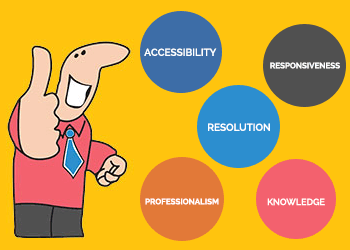-
-
Responsiveness: When customers get in touch with the support team, do representatives respond quickly and with concern? How long to clients need to wait to receive an answer to their problems?
-
Knowledge: Are customer service representatives fully informed and prepared to answer even the most complex questions?
-
Professionalism: Do support team members take their jobs seriously and treat customers with respect?
-
Resolution: How quickly, and how often, are support teams able to find a full resolution to client issues?

Remember, customer satisfaction is made up of many components, and your customer support team is a key contributor. Make sure they have the right tools to manage customer relationships, and that you are tracking the right information on a regular basis to better understand your customers.




All these metrics are great, but where I work, it is a two person branch location of a local college bookstore. The two of us work to provide what we can for or customers, but we simply don’t have the room for everything available to customers at the main campus location. We rely on our courier to bring things up to us ordered by customers online and supplies that we request, but he is a one person operation for most of the year and can only bring what the van can carry for both our location and one other outlying shop location. Most of our customers are pretty understanding of this, but I know some are left disappointed by this seeming lack of support. What do you do then? At times, my coworker and I sometimes feel that we are lacking support from the main campus managers as well.
Hi Lisa, I’m sorry to hear about your frustration – it sounds like you genuinely care about your customers (love it!) and you probably need to have a conversation with the department manager about getting the support you need. It’s always helpful to have data when you start those conversations, so maybe a simple customer survey is in order, to get the direct feedback about these issues (and assess how your customers are feeling). Also if there’s any way to get the sales numbers to show what you’re processing vs the main campus that could help – resources should naturally align with the division of sales so if they don’t, that’s a great argument to get you more support. Best of luck, and keep up the great customer service!